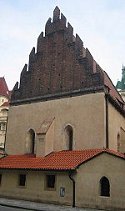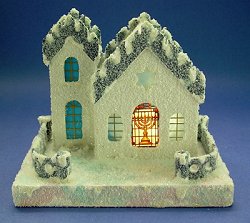 | |||
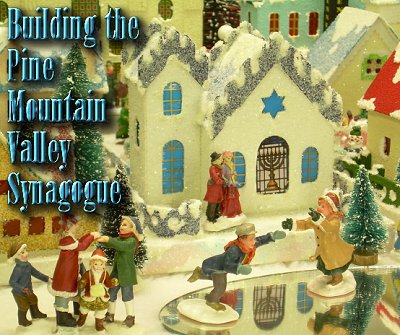 |  |  |
 |  |
 |  | ||
 |  | ||
 |  | ||

| Written by Howard Lamey (with a little help from Paul Race) for Big Indoor TrainsTM |


|
Note from Editor: This is another of our series of articles on building glitterhouses, replicas of those cardboard houses that were popular wintertime decorations in the mid-20th century. These projects come to us courtesy of Florida designer Howard Lamey. Howard loves collecting and designing glitter houses, or as collectors call them, "putz" houses, from a German-American word related to "putter."
The roof line of this project was inspired by internet images of oldest synagogue in Prague. Originally built in 1275, the structure is still used for worship today. We hope folks will see this as a way of sharing our "best wishes" for the season and the coming year to everyone in our real communities. If you like this structure and want to have an "all-season" version of it, there's no reason not to create a stone or brick version along the lines of the Stone Cottage project.
When Paul suggested this project to me, I went looking for examples of synagogue architecture. The Prague "Old-New" Synagogue had such a distinct roofline, that I kept coming back to it.
|
|||||||||||||||||
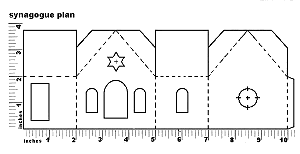 | ||
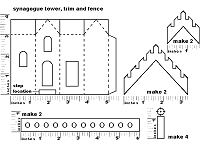 |
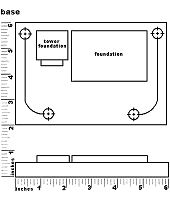
| 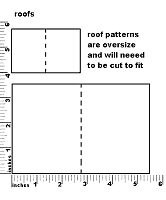 |
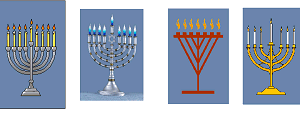 |
You can easily download the full-sized plans by clicking on the pictures above.
For each plan, select the print option, tell it to "auto rotate and center" or whatever else you need to do to make your printer go to Landscape mode. Don't select the "scale to page" or "shrink to fit" option. Print. When you get your printout, double-check the measurements with a ruler. I would recommend printing the menoras on plain paper first to check the fit of the one you like before printing on vellum.
Note: On some printers, a small portion of the image will disappear at the outside edge of the page. But you can easily "fill in the details" by looking at the mini versions above.
If you can't get these plans to work, contact Paul and ask him for help - that's his department. :-)
Build the Base, Fence, and Foundations
The base is a rectangular "box" that is decorated before the station is installed. For this project, it should be about 4"x6" and 1/2"-to-5/8" thick. The foundations are simpy rectangles that help the building and tower stay in place after everything is glued together. The fence is cut from thick cardboard, such as the back of a writing tablet, or the fine corrugated cardboard the Post Office uses for small shipping containers. I made the round holes in my fence with a heavy-duty paper punch.
Cut and Build Up The Base - Build the base up from layers of corrugated cardboard glued together in a sandwich. You then wrap and glue a strip of thin poster-board or cereal-box cardboard all around it to smooth over the rough edges of the corrugated cardboard.
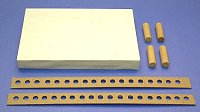 Wrap the Base - When the base is built and the glue is dry, you cover it with white bond paper just like you would wrap a gift, except that all surfaces of the paper cover must be completely glued down to the box. A glue stick works great for this.
Wrap the Base - When the base is built and the glue is dry, you cover it with white bond paper just like you would wrap a gift, except that all surfaces of the paper cover must be completely glued down to the box. A glue stick works great for this.
Note: More details about building bases are provided in our article: Building Glitterhouse Bases
Cut the Foundations - You can use scraps of foam core board or stiff corrugated cardboard, since the edges won't show. Don't glue them down until you have assembled the building and tower - the fit needs to be a bit loose so the foundations don't exert lateral pressure on the structures' seams.
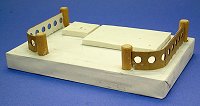 Assemble the Fence - After you've figured out where the structures will go by laying out the foundation pieces, decide where you will want the fence posts. Use a sharp knife (like a Xacto knife) to cut out shallow holes in the base where the fence posts will go. After you've glued those in place, bend and glue the fence as shown in the photo to the right. You will probably have to cut off some extra material.
Assemble the Fence - After you've figured out where the structures will go by laying out the foundation pieces, decide where you will want the fence posts. Use a sharp knife (like a Xacto knife) to cut out shallow holes in the base where the fence posts will go. After you've glued those in place, bend and glue the fence as shown in the photo to the right. You will probably have to cut off some extra material.
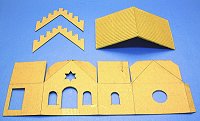 |
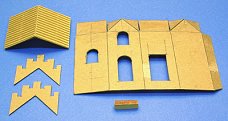 |
Cut Out the Structure Pieces
- Carefully transfer the patterns of all pieces to the cardboard building stock. A .05 mm lead mechanical pencil and a “C-Through” brand ruler make this accurate and easy.
- Put new blades in the knife that you will be using.
- Score the fold lines before you begin cutting out the main structure parts. Use the metal ruler or other steel edge as a guide.
- Still using a steel-edged ruler as a guide, cut out the shapes. Watch your fingers.
Assemble and Paint the Structures
Note: You'll notice that there is some "hurry up and wait" involved with this portion of the project. That's one reason I often work on more than one building at a time.- Using Elmer's white Glue-All or a similar product, assemble the house pieces.
White glue works best if you apply a thin coat to each mating surface and wait a few moments for the glue to become tacky. Do not glue the building to the base until the instructions say to. You CAN check the fit as you progress by setting it on the foundation, if you wish.
- Fold the building walls where you have scored them and glue the tabs that hold them together (below left). Do the same for the tower. You may find clothespins useful for holding things in place. While it's drying, be sure to check it every so often in case something has slipped out of place.
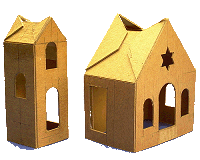
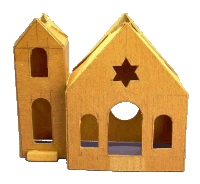
- After the buildings are thoroughly dry, glue them together. In the photo above right, you can see that the step is also glued in place.
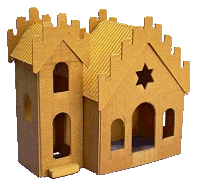 When the buildings are thoroughly stuck to each other, glue on the trim as shown to the right. Note: The trim in this photo is not the same as the trim in the patterns. The trim in the patterns is correct.
When the buildings are thoroughly stuck to each other, glue on the trim as shown to the right. Note: The trim in this photo is not the same as the trim in the patterns. The trim in the patterns is correct.
- After the trim is secure, trim the roof pieces as necessary to fit between the trim on the roof without causing any outward pressure.
- After the building is dry, you may check the fit on the foundation and base if you'd like (below left), but don't glue it down yet.
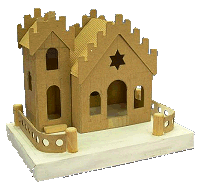
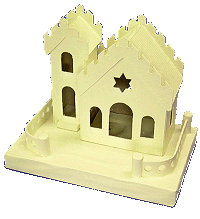
- Prime everything - the building, trim, base, and fence - with flat white wall paint (above right). Again, the buildings are not glued to the foundation yet. Don’t skip this step; it gives you a uniform surface for painting.
- Paint the building in your choice of colors (below left). I use acrylics from the Wal-Mart craft department. For anything that is painted gold, silver or bronze, I use “Testors” brand model paint. You'll see for this project that I dabbed on some seriously thick white paint to represent snow drifting over the edges of things - that part is optional.
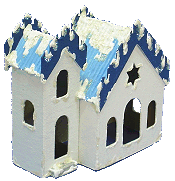
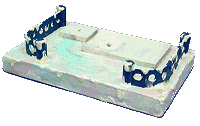
- Paint the base and fence (above right). A white base with random swirls and dabs of very light pastel blue and pink are a good choice. Paint the fence a color that ties in with the building but is dark enough to contrast with the base. I suggest you not use yellows, beiges or greens in the snow.
- When the paint is throughly dry, add clear glitter to the house and the base. Brush on a thin, but even coat of undiluted white glue and sprinkle on the glitter. Don’t try to do the entire house or base at once. White glue starts to film-over and dry quickly so just do a wall or a section at a time. The glue dries clear so don’t judge the final look until the glue is dry. Again, do not glue the buildings to the base yet.
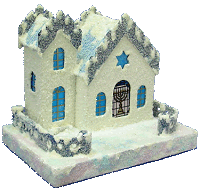 Cut out the window material and glue it in place from the inside. When the glue is dry, use the gold pen and a straightedge to draw mullions on the windows.
Cut out the window material and glue it in place from the inside. When the glue is dry, use the gold pen and a straightedge to draw mullions on the windows.
- When you're completely satisfied with how things have gone together, glue the building to the foundation/bass assembly. As you can see in the photo to the right, I added a bit of glue and some more glitter where the building meets the base to give a more finished appearahce.
Add Finishing Touches
If you wish, you can use several light coats of clear satin acrylic spray to protect the paint and glitter from handling and light.
Conclusion
You can see that, when you get to the gluing, painting, and glittering stages, there's a lot of "hurry up and wait." That's one reason many people who build modern putz house recreations work on two or three houses at the same time - you can work on the second house while the glue is setting on the first one, and so on.[Editor's note: Howard has three grown children with families and Christmas villages of their own, which is why he often makes four buildings at the same time, so he gets to keep one. - Paul]
Looking for Your Ideas, Projects, or Photos - Also, if you have similar project, ideas, or photos that you'd like to share with your fellow readers and hobbyists, please get in touch. We'd love to add them to our sites, and we'll be sure to give you full credit for your contribution.
 Commercial "Plug" - Now that I'm in "retirement," this hobby has become a sort of avocation for me. Several folks have commissioned me to build specific houses for them. I often provide an "artist's conception" such as the one at the right to make certain I understand what they want. Sometimes the "artist's conception" needs to be tempered by adjustments to make the house fit in better with the other houses it will be joining, as well as color and accessory changes. But it all starts, quite literally, at the drawing board.
Commercial "Plug" - Now that I'm in "retirement," this hobby has become a sort of avocation for me. Several folks have commissioned me to build specific houses for them. I often provide an "artist's conception" such as the one at the right to make certain I understand what they want. Sometimes the "artist's conception" needs to be tempered by adjustments to make the house fit in better with the other houses it will be joining, as well as color and accessory changes. But it all starts, quite literally, at the drawing board.
Perhaps you had a pasteboard house collection when you were young and would like to have a replica made. Or you have an idea for something that's never been done. If you can find a photo or hash out a drawing or anything else to give me some idea of what you're looking for, that can be enough to get started.
If you'd like me to help you design and/or build a special vintage pasteboard house for you, or if you have any questions at all, please see my site, LittleGlitterHouses.com for more information.
Other Resources for Putz Houses and Related Information
Other Putz House Articles:- What is a Glitterhouse? - Our introduction to the hobbies of collecting and building glitterhouses.
- Building Glitterhouse Bases
 What You Need to Build Glitterhouses
What You Need to Build Glitterhouses
- Building a Glitterhouse - A detailed primer on starting your own glitterhouse hobby, including free downloadable plans and detailed instructions for making simple houses and churches.

 Building the Little Charmer - A new glitterhouse project that is a step up from our beginning glitterhouse. Includes free downloadable plans.
Building the Little Charmer - A new glitterhouse project that is a step up from our beginning glitterhouse. Includes free downloadable plans.
- Building a Picture Window House - Another new glitterhouse project. This one includes unique features such as a sand finish and picture window that reveals a "Christmas scene" Includes free downloadable plans and directions.
 Building a Bay Window House - Bay windows were popular in Europe for centuries; they were also popular in the mid-20th century in North America. This project will add a nice variety to your Christmas village.
Building a Bay Window House - Bay windows were popular in Europe for centuries; they were also popular in the mid-20th century in North America. This project will add a nice variety to your Christmas village.
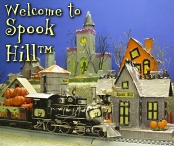 Welcome to Spook HillTM - Howard has designed a whole, family-friendly, Halloween community built in the vintage "putz-house" style. Includes many free downloadable plans, photos, and detailed instructions.
Welcome to Spook HillTM - Howard has designed a whole, family-friendly, Halloween community built in the vintage "putz-house" style. Includes many free downloadable plans, photos, and detailed instructions.
Other Putz House Resources:
- LittleGlitterHouses.com - Putz house builder Howard Lamey now has his own site, begun in December, 2007. You can get ideas for your own project, commission your own custom-built glitterhouse, or buy a precut kit and finish it yourself.
- "Papa Ted's Place" Ted Althof's extensive resource about vintage pasteboard houses. Includes some history, many photos from other people's collections, and resources to help you build your own. The links below will take you right to the appropriate page on "Papa" Ted's site. You'll find lots of other pages to look at while you're there, though.
- Building from Scratch - "Papa" Ted Althof has collected tips and photos from other glitterhouse builders including Tom Hull and Ted Howard.
- Repair and Restoration - "Papa" Ted Althof publishes Tom Hull's tips for restoring damaged antique glitterhouses.
 Reproduction Parts - Ted offers authentic reproductions of just about every door and window that were used in glitterhouses over a 35-year period. These include celophane and paper "see-through" windows, as well as "stick-on" windows. If you don't know what sizes you need, you can order a template or sample pack. The page includes several photos showing how the replacement parts bring otherwise solid vintage glitterhouses "back to life."
Reproduction Parts - Ted offers authentic reproductions of just about every door and window that were used in glitterhouses over a 35-year period. These include celophane and paper "see-through" windows, as well as "stick-on" windows. If you don't know what sizes you need, you can order a template or sample pack. The page includes several photos showing how the replacement parts bring otherwise solid vintage glitterhouses "back to life."
- Making "Flocked" Windows - Tom Hull's method for making "fuzzy" windowframes on celophane, with additional tips by author and glitterhouse collector Antoinette Stockenberg.
- Repairing or Replacing Trees Tom's article about the "lufa" trees that were common on pre-war glitterhouses, and can be repaired or else replaced by new lufa carefully cut, soaked with dark green acrylic paint, and allowed to dry before gluing and applying white paint for "snow."

- Antoinette Stockenberg's photographs and comments on putz houses and life in general. - This is an entirely different kind of site from Ted's, but first class in every way. Antoinette is a published novelist who started decorating her home with putz houses some years back, started learning about the hobby, and the rest is history. She populates her putz with period-appropriate accessories, including "flats," inexpensive vintage figures made like tin soldiers. She also writes some nice articles about her putz villages and other subjects. The above link takes you to her home page, which usually has great photographs of her mantle-top putz. Be sure to look at previous years' pages to see other buildings, accessories, and arrangements.

Other Articles that Discuss Putzes and Christmas Villages of the mid-20th Century:
- About Nativities - Describes how German-American Nativity displays (the original "putzes") grew into communities and landscapes that included pastboard, glittered houses and even electric trains.
- What Do Trains Have to Do With Christmas - Describes how electric trains contributed to the communities many families set up at Christmas, with some details about the elaborate "Christmas Gardens" of the Baltimore/DC area.
 To Return to the BIG Indoor Trains(tm) Primer Page, click here.
To Return to the BIG Indoor Trains(tm) Primer Page, click here.
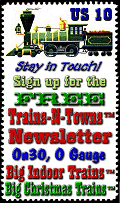
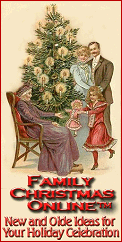






|

|  |
 |
 |  |  |
decorations that have been popular with our readers.
Many are inspired by designs and paintings by Thomas Kinkade(r).
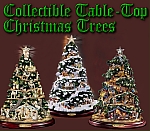
| 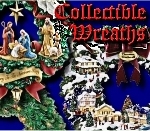
| 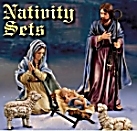
| 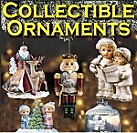
| 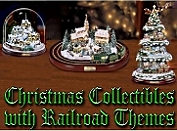
|
Note: Big Indoor TrainsTM, Big Train StoreTM, Family Garden TrainsTM, Big Christmas TrainsTM, Garden Train StoreTM, and Trains and TownsTM are trademarks of Breakthrough Communications (www.btcomm.com). Spook HillTM and LittleGlitterhouses.comTM are trademarks of Howard Lamey. All information, data, text, and illustrations on this web site are Copyright (c) 1999, 2000, 2001, 2002, 2003, 2004, 2005, 2006, 2007, 2008 by Paul D. Race. Reuse or republication without prior written permission is specifically
forbidden.
Big Indoor Trains(tm) is a participant in the Amazon Services LLC Associates Program, an affiliate advertising program designed to provide a means for sites to earn advertising fees by advertising and linking to amazon.com.
For more information, contact us.

